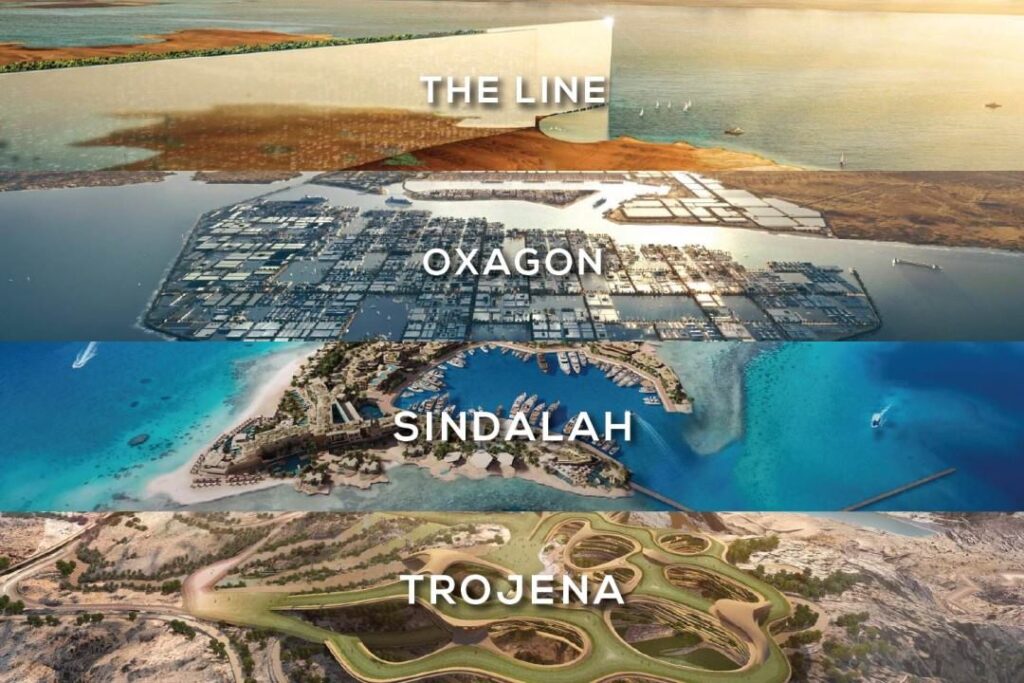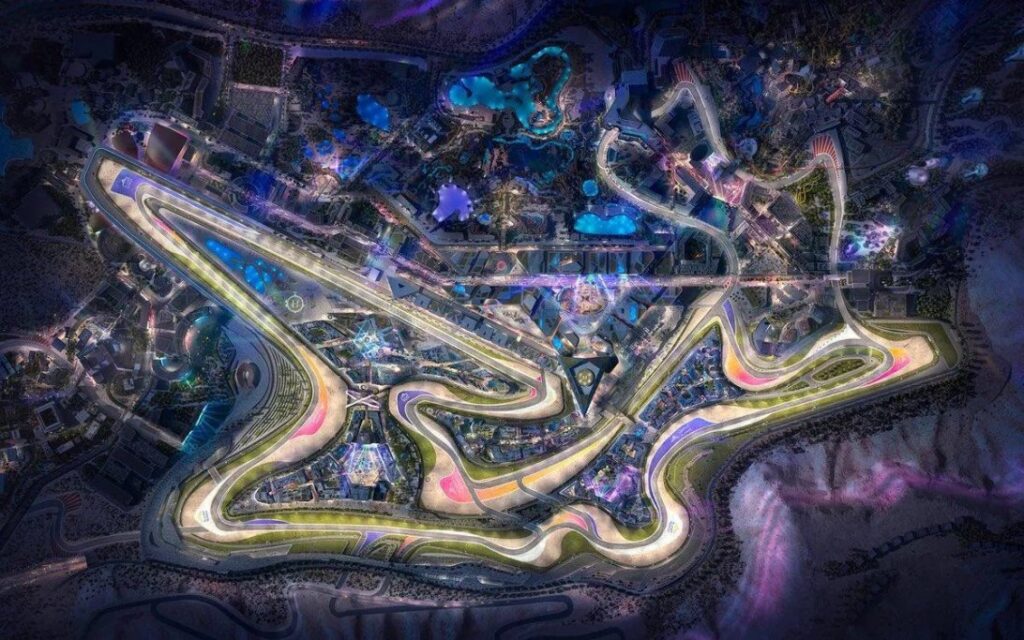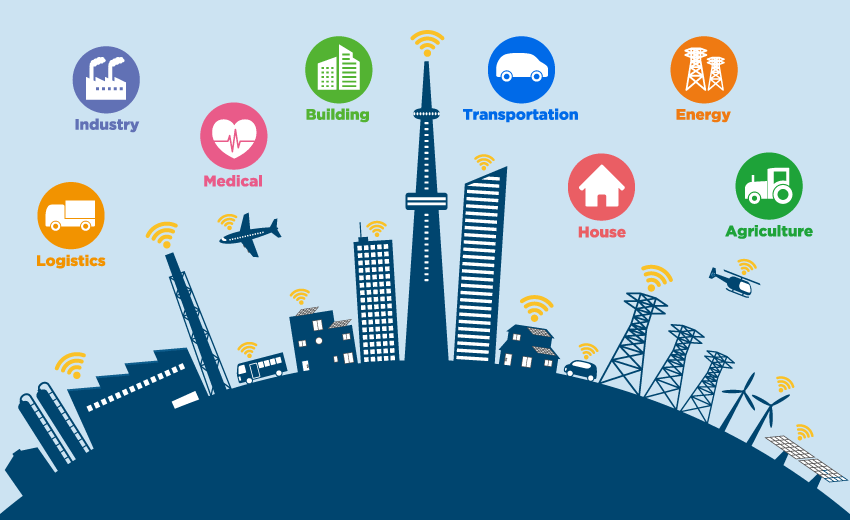Saudi Arabia’s bold vision for the future, NEOM, is redefining urban development on a global scale. With a massive $500 billion investment, this innovative smart city is set to become a hub for technology, sustainability, and innovation. NEOM is part of Saudi Arabia’s Vision 2030 and aims to push the boundaries of what’s possible in city planning, engineering, and environmental resilience. In this article, we explore how NEOM is transforming urban development while setting new standards for future cities.
Revolutionizing Urban Development in NEOM
NEOM is not just another large-scale city project; it represents a shift in thinking about urban development. The city is designed to address many of today’s most pressing urban issues, including climate resilience and intelligent infrastructure. As cities worldwide grapple with overcrowding, pollution, and unsustainable growth, NEOM offers a forward-thinking solution. By incorporating cutting-edge technology and sustainable practices, it aims to be a model for modern urban development.
Key Projects of NEOM: The Line, Oxagon, Trojena, and Sindalah
At the heart of this futuristic development are four major projects, each contributing to NEOM’s revolutionary approach:
Sindalah: A luxury island resort, offering eco-friendly tourism with world-class amenities.
The Line: A 170-kilometer linear city, eliminating cars, promoting walkability, and powered entirely by renewable energy.
Oxagon: The world’s largest floating industrial hub, focusing on sustainable industries like clean energy and robotics.
Trojena: A mountainous eco-tourism destination offering year-round adventure sports and sustainable design.
Smart Cities and Intelligent Infrastructure
At the heart of NEOM’s development strategy lies a focus on building a smart city that seamlessly integrates advanced technology into everyday life. From autonomous vehicles to AI-powered public services, NEOM envisions an environment that is efficient, connected, and eco-friendly. For instance, the Internet of Things (IoT) plays a crucial role by connecting devices and systems, which enhances the city’s infrastructure. This integration will not only optimize energy use but also improve safety and elevate the quality of life for its residents.
Moreover, transitioning to a digital-first infrastructure is essential for NEOM’s success. By leveraging IoT, the city creates interconnected systems that allow for real-time monitoring and resource optimization. Whether managing water or distributing energy, these systems aim to make the city as self-sufficient and sustainable as possible.
Sustainability at the Heart of NEOM
NEOM puts a strong focus on environmental sustainability. The project’s planners understand the environmental challenges cities face, and as a result, they have embedded climate resilience into every aspect of the design. This includes the use of renewable energy sources, green architecture, and sustainable waste management practices. NEOM plans to adopt technologies like solar power, wind energy, and hydrogen fuel to become a zero-carbon city, setting a new standard for sustainable urban living.
Additionally, the city’s layout prioritizes open spaces and greenery to create harmony between urban life and nature. Sustainability also extends to transportation, with a focus on autonomous electric vehicles and high-speed rail networks. These systems reduce reliance on fossil fuels and promote eco-friendly alternatives for transportation.
NEOM’s Impact on Global Urban Development
NEOM’s significance extends far beyond Saudi Arabia; it could reshape global urban development approaches. With its focus on innovation, technology, and sustainability, NEOM provides a template for future cities aiming to embrace smart solutions and sustainable growth. The city’s ability to combine these elements could inspire new strategies for urban development worldwide.
Autonomous Transportation Systems
One of NEOM’s most transformative aspects is its focus on autonomous transportation systems. In a city designed to minimize traffic congestion and lower environmental impact, these systems are vital. Electric vehicles and high-speed transit options will dominate NEOM’s transportation landscape, reducing emissions while making travel more efficient.
Furthermore, autonomous transport addresses the growing demand for sustainable transportation and enhances safety and accessibility. NEOM’s infrastructure will support self-driving vehicles, enabling faster, safer commutes with less environmental impact.
Digital Innovation and the Future of Smart Cities
Digital innovation plays a key role in NEOM’s goal of revolutionizing urban development. Artificial intelligence, big data, and IoT integration are fundamental in creating a smart, responsive city where all systems work together. NEOM’s use of IoT will ensure seamless communication between devices and infrastructure, making the city more efficient over time.
The city’s NEOM’s smart systems will manage everything from energy consumption to public services. This ensures that the city stays at the forefront of urban development. By doing so, NEOM is expected to set a global standard for smart cities, demonstrating how technology can improve living conditions while promoting sustainability.
NEOM Leading the Future of Urban Development
NEOM is not just a futuristic city; it offers a glimpse into the future of urban development. By integrating technology, sustainability, and intelligent infrastructure, NEOM is designed to address tomorrow’s challenges. From autonomous transportation to climate-resilient architecture, the city’s development strategy is poised to transform how cities will be built in the future. Through its emphasis on digital innovation, sustainability, and smart design, NEOM stands as a symbol of what urban development can achieve in the 21st century.



